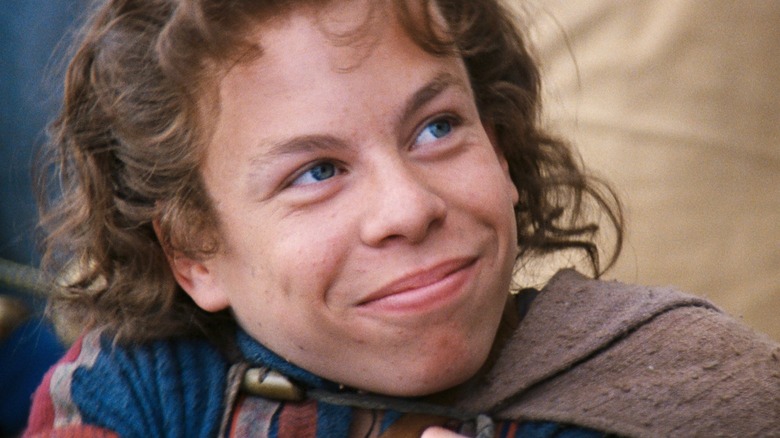How Willow Changed The Game For Special Effects In Film
Unlike many other well-remembered fantasy adventure films released in the 1980s ("Legend," "Return to Oz"), director Ron Howard's "Willow" was neither a critical nor financial dud before it found a second life as a cult favorite on the home market. No, the tale of Willow Ufgood's unexpected journey received lukewarm reviews from critics and did okay (no more, no less) at the box office. It's not as exciting as the stories we movie geeks love to tell about how certain films we adore weren't appreciated at all in their time, but so it goes.
None of that's to say "Willow" isn't enjoyable. George Lucas' story for the film may be a derivative mashup of elements from "Lord of the Rings" and "Star Wars" (complete with some proto-Jar Jar Binks-style sidekicks), but Warwick Davis is wonderful as the plucky, lovable Willow, as is Val Kilmer as the incorrigible, Han Solo-y swordsman Madmartigan. The movie's fantasy setting is similarly imaginative and full of wondrous creatures brought to life through Industrial Light & Magic's visual effects sequences, most of which hold up decently today.
Interestingly, "Willow" was actually a game-changer for digital effects, thanks to the scene where Willow struggles to use magic to restore the sorceress Fin Raziel (Patricia Hayes) to her human form so she can help the film's heroes save the day. Willow ends up transforming Fin into multiple animals before getting the spell correct — an effect that might seem ho-hum today but was a big deal in 1988.
It's Morphin' Time!
In order to create the illusion of Fin seamlessly changing forms (seen above), ILM's Dennis Muren and his team (including his fellow "Willow" VFX artist David Allen) decided to use a technique known as "digital morphing." This process required them to photograph each animal featured in the scene and Hayes' body double separately before feeding the imagery into a computer program newly developed by Douglas Smythe (who later won an Oscar for his VFX work on 1992's "Death Becomes Her"). Said program then generated a smooth transition from one image to another before outputting the whole thing back onto film.
Mind you, "Willow" wasn't the first movie to utilize "morphing." Two years before, the 1986 fantasy action-comedy "The Golden Child" had used an early version of this effect in a scene where the evil Sardo Numspa (Charles Dance) transformed from a rat into his human form before calmly stabbing someone in the face and turning back into a rat. Here, however, the "morphing" effect was notably less complex than the one in "Willow."
All the same, "The Golden Child" and "Willow" represented a major landmark for live-action films, which had previously relied on dissolves to "morph" objects or people (to far less refined results). "Morphing" effects would famously take another leap forward a few years later with the T-1000 in 1991's "Terminator 2: Judgement Day" and are still widely used today. And to think: it all goes back to a couple of weird '80s fantasy flicks.
